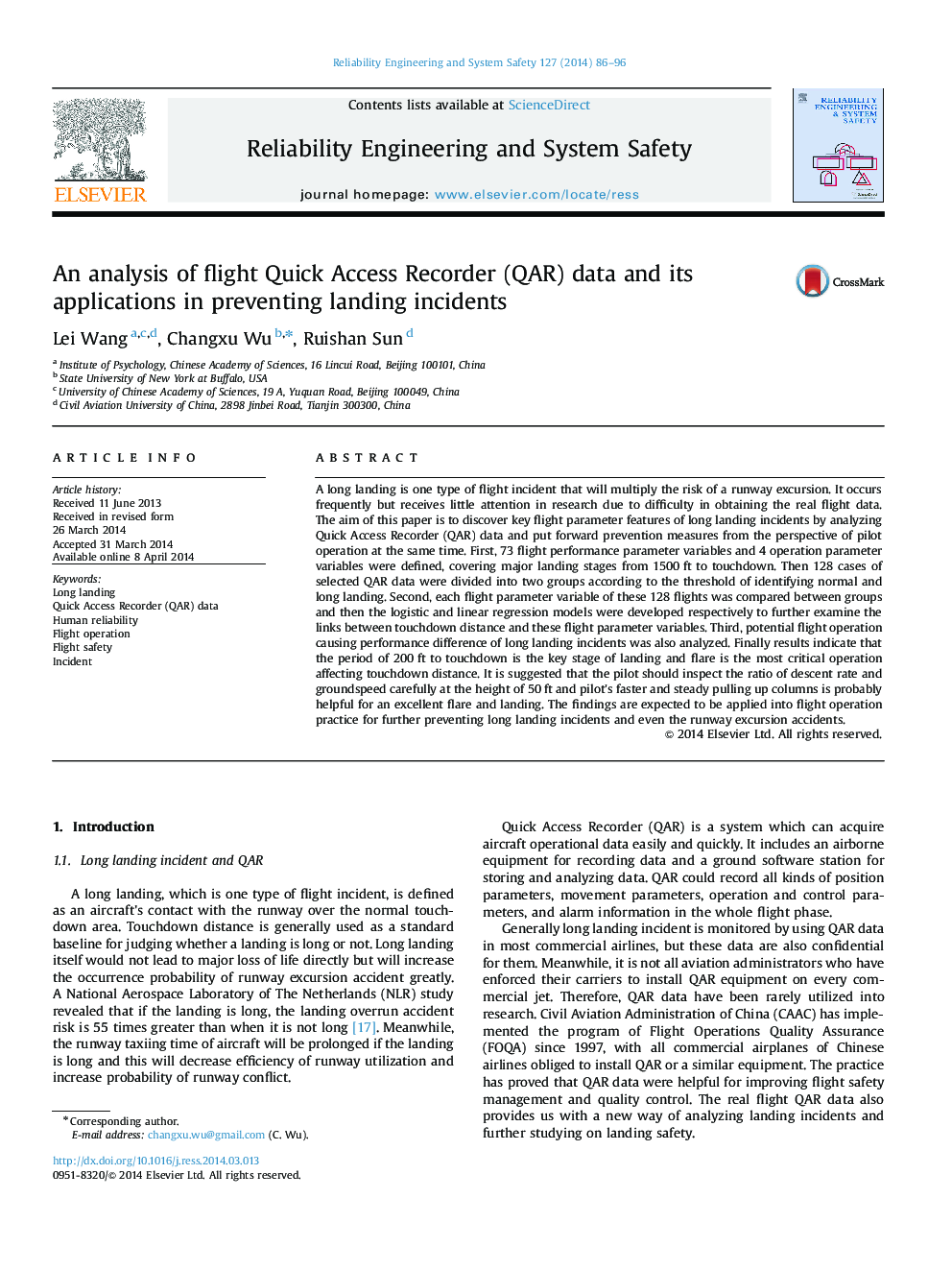| Article ID | Journal | Published Year | Pages | File Type |
|---|---|---|---|---|
| 7195735 | Reliability Engineering & System Safety | 2014 | 11 Pages |
Abstract
A long landing is one type of flight incident that will multiply the risk of a runway excursion. It occurs frequently but receives little attention in research due to difficulty in obtaining the real flight data. The aim of this paper is to discover key flight parameter features of long landing incidents by analyzing Quick Access Recorder (QAR) data and put forward prevention measures from the perspective of pilot operation at the same time. First, 73 flight performance parameter variables and 4 operation parameter variables were defined, covering major landing stages from 1500 ft to touchdown. Then 128 cases of selected QAR data were divided into two groups according to the threshold of identifying normal and long landing. Second, each flight parameter variable of these 128 flights was compared between groups and then the logistic and linear regression models were developed respectively to further examine the links between touchdown distance and these flight parameter variables. Third, potential flight operation causing performance difference of long landing incidents was also analyzed. Finally results indicate that the period of 200 ft to touchdown is the key stage of landing and flare is the most critical operation affecting touchdown distance. It is suggested that the pilot should inspect the ratio of descent rate and groundspeed carefully at the height of 50 ft and pilot׳s faster and steady pulling up columns is probably helpful for an excellent flare and landing. The findings are expected to be applied into flight operation practice for further preventing long landing incidents and even the runway excursion accidents.
Related Topics
Physical Sciences and Engineering
Engineering
Mechanical Engineering
Authors
Lei Wang, Changxu Wu, Ruishan Sun,
